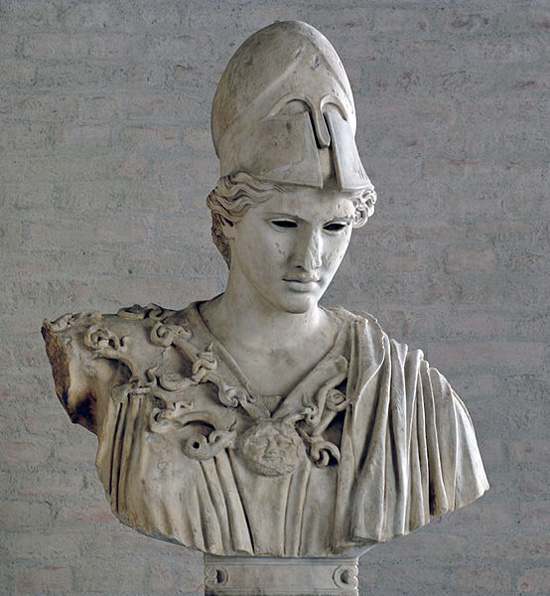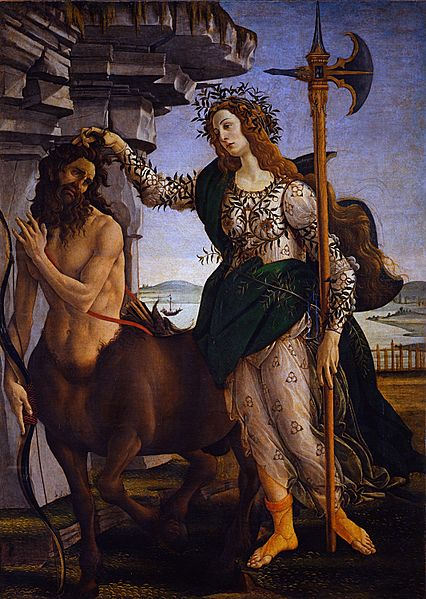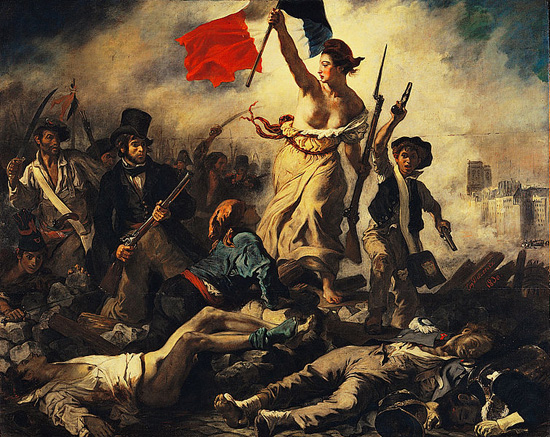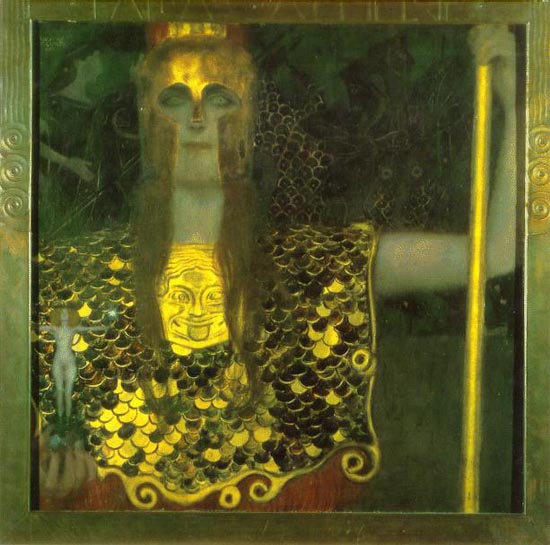Pallas Athena

Athena is clearly the most interesting and popular of the classical Greek gods and goddesses - something the Greeks figured out since most major cities, notably Athens, considered her their patron and protector. That may have been because she actually got things done. Among her most interesting attributes: her gleaming eyes and her association with owls, olive trees and snakes, her helmet, armor and long spear, and her association with Nike, the goddess of victory. Feminist thinkers have long embraced her (with reservations), sometimes tying themselves up in knots with words like androgyny and paradox.
Below is a bust of Athena from the 2nd century CE, after a votive statue by the sculptor Kresilas of Athens (5th century BC). The inlaid eyes are lost. Around her neck is the protective Gorgon amulet known as a gorgoneion. On her head is a Corinthian helmet tipped back. This bust is now in the Glyptothek museum in Munich.

Athena remained popular with the Romans (as Minerva) but by the Christian era she was in decline along with the other gods. The Virgin Mary was on the rise.
During the Renaissance, even with the revival of interest in Neoplatonism in the 15th century and Neoclassicism in the 18th, she did not provoke much interest from artists, as least as compared with Aphrodite/Venus. Below is Botticelli's version, with Athena firmly sorting out a centaur, a weapon in the other hand. This painting from around 1482 is known as Pallas and the Centaur and it is in the Uffizi in Florence. For the companion paintings, here and here.

It was only by the revolutionary times of the late 18th century that she re-emerged, associated with the younger Roman goddess Libertas. She is implicit in Lady Liberty in the United States (Benjamin Franklin was a big fan) and in Marianne, the French Republican heroine. In France her helmet was replaced by the Phrygian Cap - you can see an image here and in Delacroix's famous painting of 1830, La Liberté guidant le peuple, in the Louvre satellite gallery in Lens. It inspired Bartholdi's Statue of Liberty in New York City.

Gustav Klimt tackled Athena in 1898 but it is difficult to know what he is saying about her, not for want of theories. This is in the Historisches Museum der Stadt Wien. For some other Klimts, click here and here and here.

